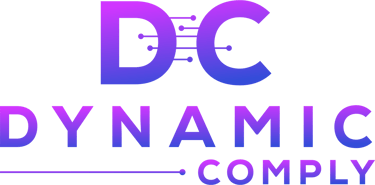Navigating the EU AI Act: 5 Steps to Avoid Costly Mistakes in AI Governance
7/17/20252 min read


Introduction to the EU AI Act
The EU AI Act is a groundbreaking legislative framework designed to regulate artificial intelligence technologies within the European Union. It aims to ensure that AI systems are safe, ethical, and respect fundamental rights. However, as organizations strive to comply with this act, many face challenges that could lead to costly mistakes. This article outlines five essential steps that businesses can take to prevent these pitfalls in AI governance.
1. Understand the Scope and Requirements
The first step in avoiding mistakes is to thoroughly understand the scope and requirements of the EU AI Act. The legislation categorizes AI systems based on risk levels—ranging from minimal to unacceptable. Organizations must analyze their AI applications to determine their classification under this categorization. Engaging in a comprehensive assessment allows businesses to prioritize compliance efforts effectively.
2. Conduct Regular Risk Assessments
Conducting regular risk assessments is crucial. These evaluations should deeply analyze potential risks associated with the deployment of AI technologies, focusing on safety, transparency, and adherence to ethical standards. By identifying risks early, organizations can implement measures to mitigate them, thereby minimizing the likelihood of incurring penalties under the EU AI Act.
3. Implement Robust Documentation Processes
Robust documentation is vital for complying with the EU AI Act. Organizations must maintain comprehensive records detailing algorithmic decision-making processes, data usage, and testing methodologies. This documentation not only serves as proof of compliance but also fosters transparency and accountability. Lacking proper documentation can lead to complications during audits or investigations, potentially resulting in significant fines.
4. Engage in Continuous Training and Awareness
Another key step in AI governance is fostering a culture of continuous training and awareness among employees. All personnel involved in AI operations should be educated about the implications of the EU AI Act and best practices for compliance. Awareness programs can help ensure that everyone understands their responsibilities, thereby reducing the risk of human error that could lead to non-compliance.
5. Collaborate with Experts and Stakeholders
Finally, collaboration with experts in AI, legal, and compliance fields is instrumental in navigating the complexities of the EU AI Act. By seeking external advice and building partnerships with industry stakeholders, organizations can gain valuable insights and best practices. Collaboration can enhance an organization’s capability to adjust to regulatory changes and stay informed on emerging compliance issues.
Conclusion
As organizations adapt to the EU AI Act, being proactive is essential to avoid costly mistakes in AI governance. By understanding the act's requirements, conducting regular risk assessments, maintaining robust documentation, investing in continuous training, and collaborating with experts, companies can position themselves to thrive within this regulatory landscape. Following these steps will not only safeguard against penalties but also contribute to the development of ethical and trustworthy AI systems.
Connect:
(571) 306-0036
© 2025. All rights reserved.
